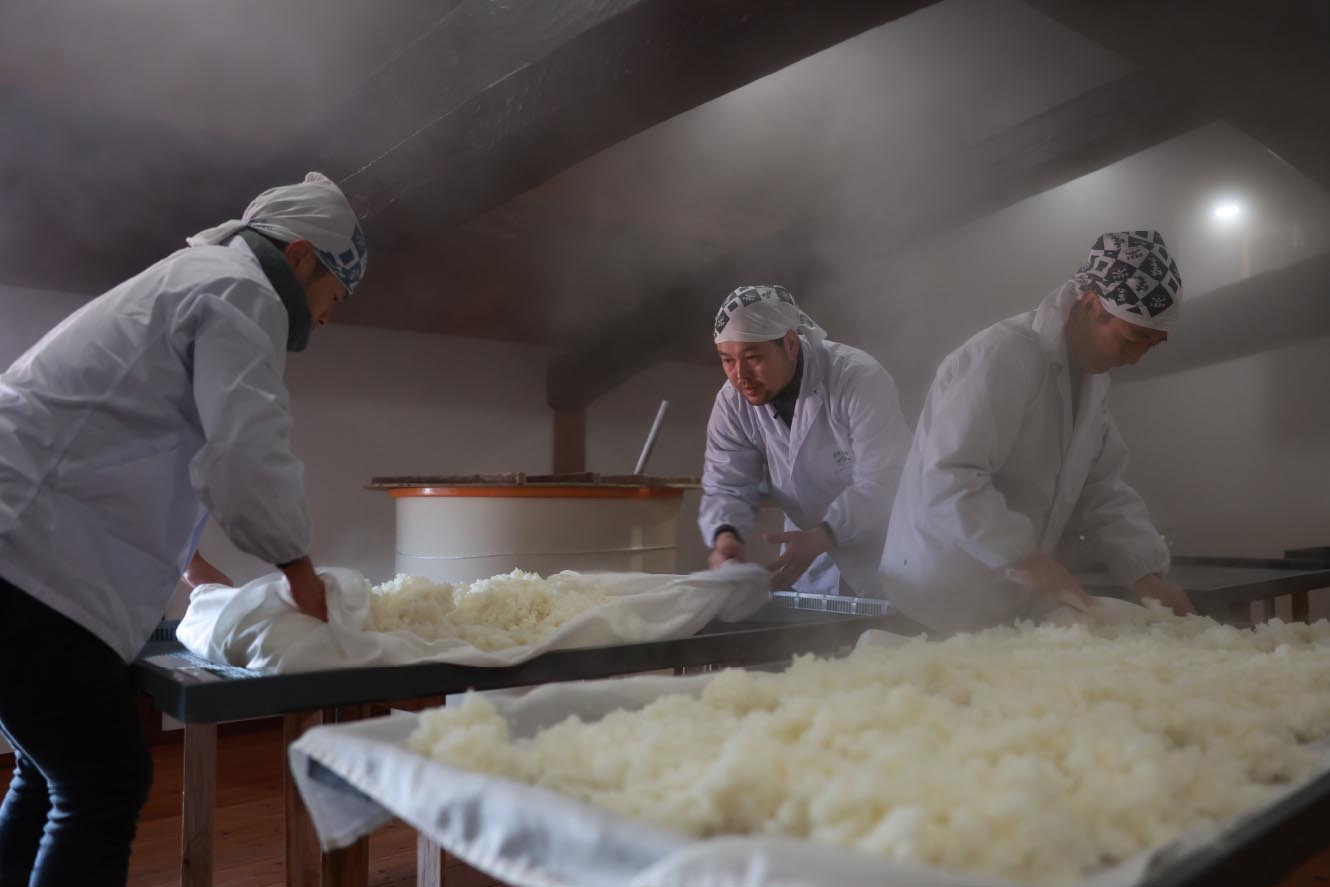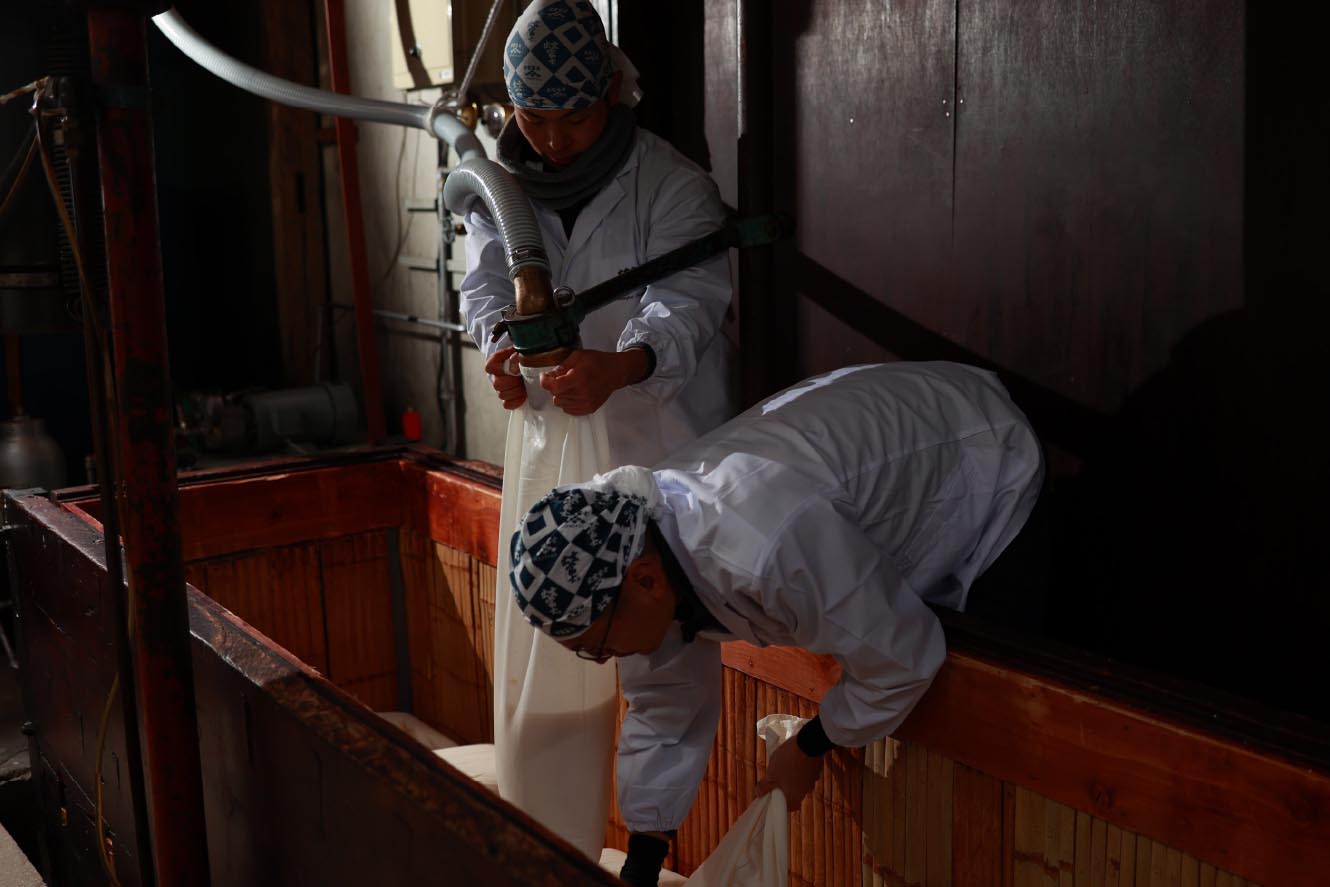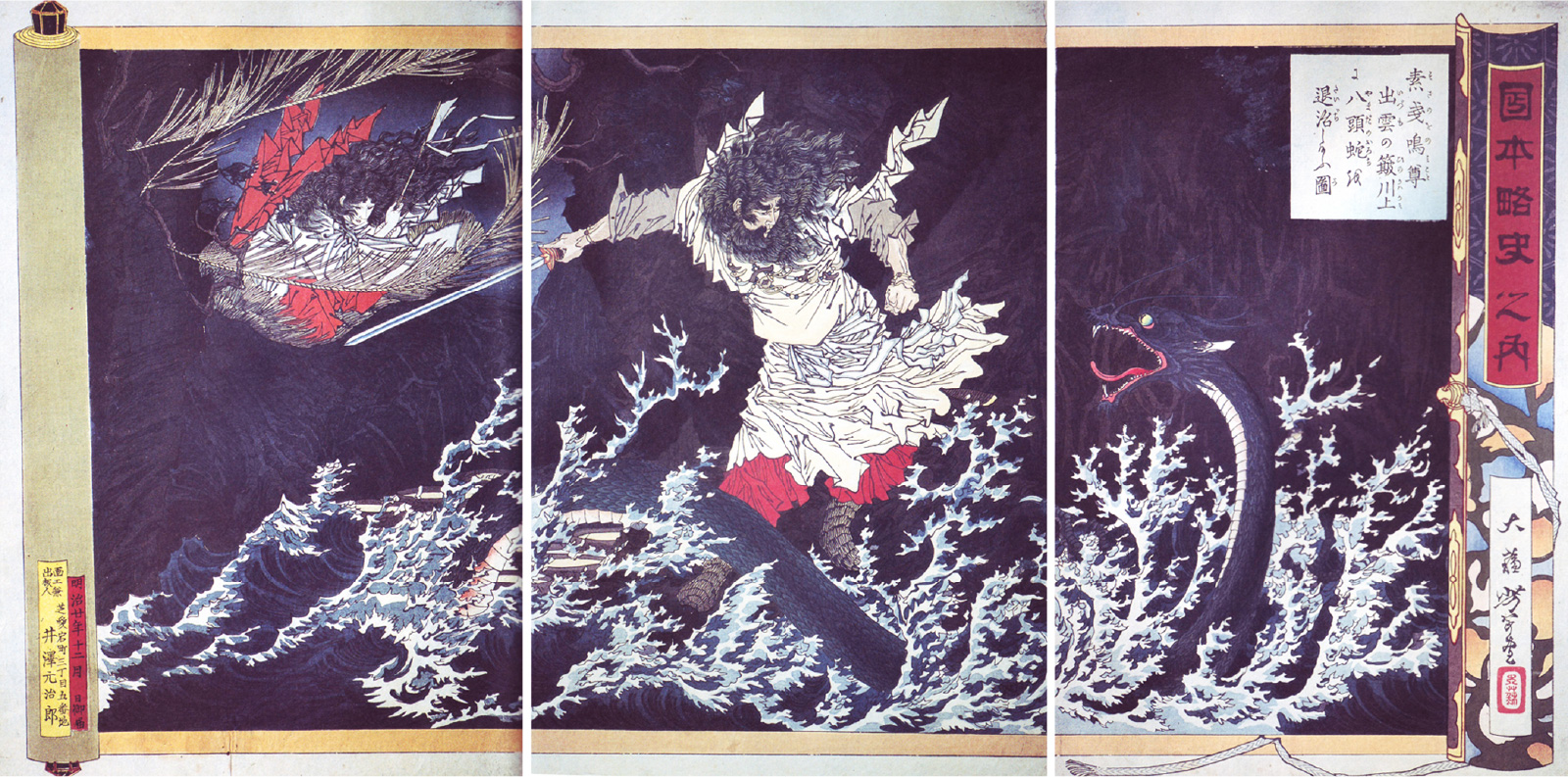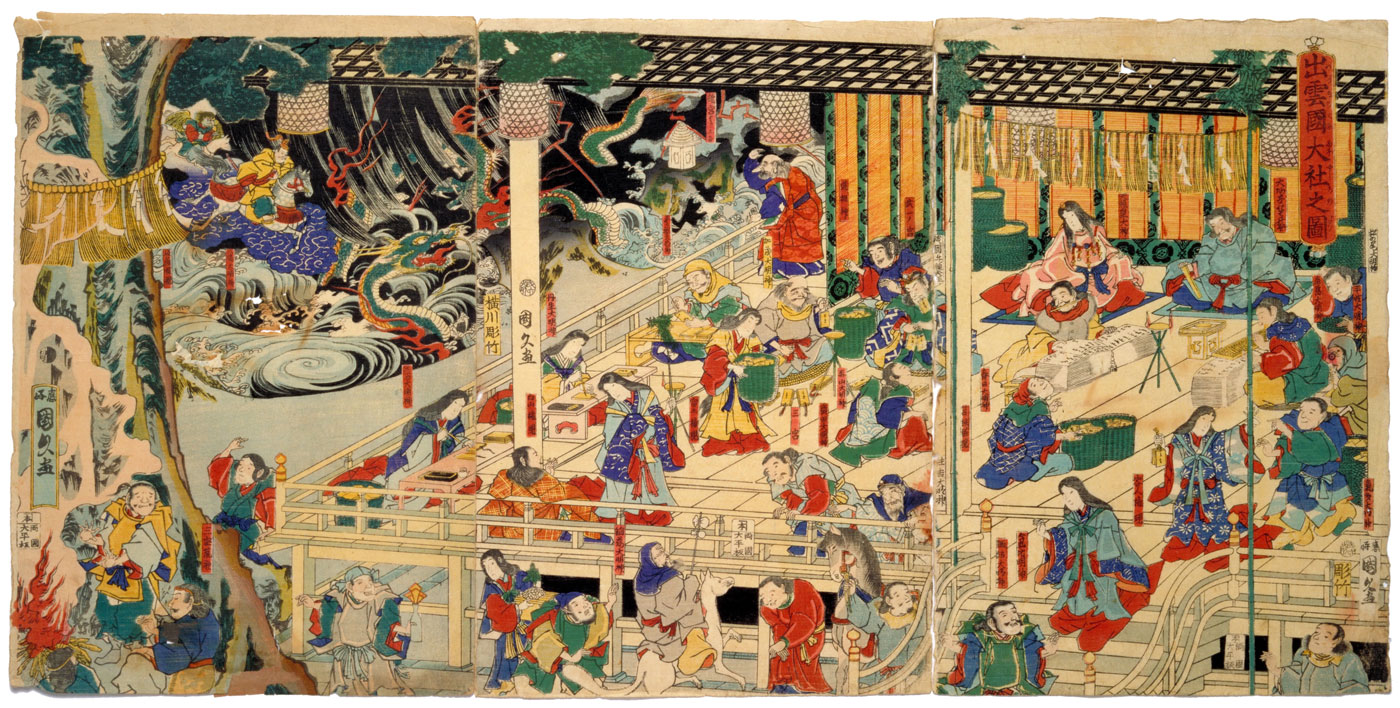

Fuji Shuzo is a small SAKE brewery located in the heart of the Izumo Plain. Shoichi Imaoka founded the brewery in 1939 and named the sake brand "Izumofuji" with a hope of brewing the best sake in Japan - a sake loved like Mt.Fuji.
In 2004 when the current toji (master brewer) returned to Fuji Shuzo, the first thing he did was to find sake rice farmers in Izumo City. He wanted to work with the farmers to produce Izumofuji, a safe and reliable sake made from locally grown rice.
Eventually our brewery founded the Nojiri Farming Cooperative located in the mountains south of Izumo City. We worked with two farmers to cultivate Sakanishiki, a premium sake rice originating in Izumo, using eco-friendly farming methods that minimized the use of pesticides and chemical fertilizers. Since then, more and more farmers have joined us, and we turned this project into an agricultural corporation specializing in Izumo Fuji sake rice in 2018.
We has been working with farmers on sake rice cultivation, including visits to Hyogo Prefecture to observe how they developed their sake rice cultivation areas, having our fields inspected by a professor of the Agricultural Experiment Station, and a rice milling expert to teach a class on sake rice cracking. Through these efforts we hope to preserve land safely in the Nojiri area and keep growing sake rice in a peaceful coexistence between people and nature.
Izumofuji has a principle "brewing Izumo's nature into sake and aspiring to become the highest quality sake in Japan like Mt. Fuji". That is why we want to craft sake as naturally as possible using traditional handmade methods in Izumo.
This is why we still press our sake in wooden tanks (Kibune Shibori). The manual process of the Kibune Shibori requires more workers than fully automatic presses. We have considered introducing automatic presses, but we worry that if we use a machine to press the unrefined sake that we had so carefully nurtured, we may lose something precious. So we keep on hand pressing our sake with the traditional wooden tank.
In the Kibune Shibori process, carefully brewed unrefined sake is placed into fabric bags little by little, and our brewers stack the bags one on top of the other by hand, slowly pressing the sake from the bags using their own weight. The sake made with this process is purer and has experienced less stress. We believe this helps us move closer to our goal of making the best sake possible.
In the process of brewing Izumofuji, rice is always passed through the hands of brewers. Even though we can't produce in bulk, we believe that brewing sake through our unique sensibility can turn "delicious" into "tremendous".
Of course, sometimes we develop and incorporate new technologies, but all of this is for crafting much better sake and delivering even more pleasure and excitement than just excellent taste. We will progress day by day as we pass along the traditions we want to preserve.




In the Kojiki, which is the oldest historical book in Japan, here are many myths set in Izumo. In the myth of Yamata-no-orochi, a mythical dragon with eight heads and eight tails, it is said that warrior Susanoo-no-Mikoto got Yamata-no-orochi drunk with sake and then cut off each of the monster’s eight heads.
There are more than 50 places where the myth of Yamata-no-orochi is passed down from upstream to downstream of the Hii-kawa River that flows through Izumo City. Therefore, it is said that the Hii-kawa River, where has many tributaries, is Yamata-no-orochi.

“A Brief History of Japan: Susanoo no Mikoto kills the Eight-headed Serpent at Hinokawa in Izumo Province” by Yoshitoshi Tsukioka, 1887
The 10th month in the lunar calendar (usually in November) is called "Kannazuki" in Japan, which means that the local gods are absent. Why? Because they are in Izumo for Kamiarizuki where they gather together to discuss national security, pray for a good harvest, and good fortune for the people of Japan.
After staying at several shrines in Izumo, including Izumo Taisha and Sata Shrine, and completing their deliberations, the gods finally stop by Mankuse-jinja Shrine for the Naorai Feast where they enjoy Izumo sake. The morning after the feast, every god return to their respective home hoping to meet again next year.

“a drawing of IZUMO-TAISHA shrine” courtesy of Shimane Museum of Ancient Izumo
In the "Izumonokuni Fudoki," a book compiled about 1,300 years ago, there is a description that "the gods gathered here (Izumo) to brew sake and held a feast for 180 days.” In the book, the god of sake brewing, Kusunokami, is enshrined at Saka Shrine in Izumo City, which is said to be the birthplace of Japanese sake. It is also said that the word "saka" in Saka Shrine is the origin of the word "sake".

In fact, Saka Shrine and Izumo Taisha are one of the few shrines licensed to brew sake.
As mentioned before, Izumo has a deep connection and a long history with the gods and sake. In Izumo, sake is not only for drinking, but it is also dedicated to shrines, offered to the gods, and used in ceremonies such as weddings and funerals. Even if a sacred place prohibits sake brewers to enter, their sake can go inside to be close to the gods.
Whether it is a dedication to the gods, a celebration for a special occasion, or just a drinking on a daily basis, Fuji Shuzo take pride in delivering every bottle of Izumofuji with the utmost care and responsibility so that it will always be the best sake we can offer.